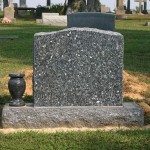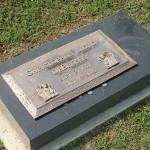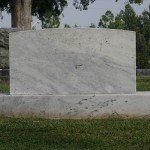Cemetery monuments have been used for thousands of years. Typically people would use whatever natural material happened to be available locally. Often this was whatever local rock was available or wood which was not very durable since it would rot very quickly. People today have more options than ever.
It is no longer necessary to pick the cemetery monument material based solely on proximity to your town. Today, people can pick the best and most durable material available. For many the choice is bronze and granite.
Throughout the years, several different types of materials have been used to create monuments. Despite their obvious deficiencies, some of these materials are still used today. Sandstone, limestone, granite, marble, and others have been used for generations. Several of these gravestone materials lack durability or accessibility.
This article will highlight the various types of materials used in cemetery memorials and will explain the advantages of each material.
- Marble grave stone
- Marble monument
- Cast Iron monument
Granite
Granite is by far the most popular headstone material type today. Granite comes in a multitude of colors including grays and pinks. It also has a wide variety of textures. Granite is one of the strongest natural materials with a durability that lasts for generations. In fact granite is so hard that it is difficult to carve by hand. Granite is very popular today because of its sturdiness.
Marble
Marble is another type of monument material that is still popular today. There are several types of marble. Marble comes in a wide range of qualities which means that some materials are quite permanent while others are not. White marble, for example, is a beautiful material but may eventually develop a black film over its surface.
Cast and Wrought Iron
Cast iron grave markers were popular during the Victorian era and have survived for generations. Their not so lucky counterparts, wrought iron grave markers still stand but many have succumbed to rust or live in an eroded state.
White Bronze – Zinc
This material was used between 1874 and 1914 and created by the Monumental Bronze Company of Bridgeport, Connecticut. These monuments were made from sand case zinc but called bronze to make it sound more appealing to customers. This monument material type was more durable than marble but was 1/3 of the cost. This company is obviously no longer in business but some of these monuments can still be seen in older parts of cemeteries.
Bronze
Bronze is also a very strong, and popular, material in use today. Bronze does not rust or tarnish. Bronze monuments are generally affixed to a granite base and this assures that the cemetery monument will remain solid for many years. Bronze monuments also basically require no maintenance because of the sturdy granite base the bronze monument is attached to.
Sandstone
As the name implies sandstone is made from sand. It is a very porous rock which means that throughout the years many of these monuments have had water seep into them and this eventually causes some breakage. This is considered one of the softest stones, like limestone, and has been used because it is easy to carve.
Limestone
Limestone is easily weathered by acidic conditions. Limestone seems to be used most often in the U.K. even today. This is considered a soft stone and was used because it was easy to carve.
Slate
Slate was one of the first stone materials used. While some slate cemetery monuments still stand today and look as if they were placed just yesterday many have crumbled. This is because slate is porous and tends to flake and split over time.
Tags: Grave Markers, Monument Materials, Monuments





[…] you have decided what type of monument will best honor your loved one, the monument material must be selected. The most commonly used material is granite; it is long-lasting and very durable. […]
[…] is the strongest of monument materials, followed by marble. These two monument materials can be scrubbed a bit more aggressively than say, […]